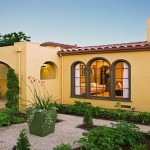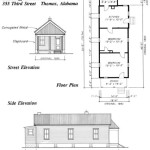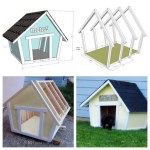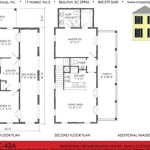A barndominium, a portmanteau of “barn” and “condominium”, is a hybrid structure that combines the practical elements of a barn with the living space of a residential home. It is typically designed to accommodate multiple uses, such as storage, workshops, and living quarters, under one roof. Barndominiums have gained popularity in recent years due to their versatility, affordability, and ease of construction. One of the key advantages of a barndominium is its adaptability. It can be tailored to fit specific needs and preferences, making it a highly customizable option for homeowners.
Barndominiums are often constructed using steel frames and metal siding, which provide durability and low maintenance. The open floor plan allows for flexibility in design, while the high ceilings and large windows create a spacious and airy feel. They offer a blend of functionality and aesthetics, meeting the needs of those looking for a unique and practical living solution. In addition, barndominiums are often energy-efficient, as they can be designed to incorporate sustainable features such as solar panels and rainwater collection systems.
In the following sections of this article, we will delve deeper into the advantages and considerations of barndominium house plans, explore different design options and floor plans, and provide tips for planning and building your own barndominium.
When planning a barndominium, there are several key points to consider to ensure a successful and functional build:
- Determine Your Needs: Define the purpose and intended uses of your barndominium.
- Choose a Suitable Location: Consider factors like land size, access to utilities, and zoning regulations.
- Plan the Floor Plan: Design the layout to accommodate living spaces, storage, workshops, and other desired areas.
- Select Materials: Decide on materials for the frame, siding, roofing, and interior finishes based on durability, cost, and aesthetics.
- Consider Energy Efficiency: Incorporate features like insulation, efficient windows, and sustainable systems to minimize energy consumption.
- Set a Budget: Determine the estimated costs for materials, labor, and permits to ensure financial feasibility.
- Obtain Permits: Secure necessary building permits from local authorities to ensure compliance with building codes.
- Hire a Qualified Contractor: Engage a licensed and experienced contractor to handle construction and ensure quality.
- Customize to Your Style: Personalize your barndominium with unique design elements and finishes that reflect your taste and preferences.
By carefully considering these points, you can create a barndominium house plan that meets your specific requirements and provides a comfortable, functional, and stylish living space.
Determine Your Needs: Define the purpose and intended uses of your barndominium.
The first step in planning your barndominium is to clearly define its purpose and intended uses. This will help you determine the necessary size, layout, and features to incorporate into your design.
- Residential Living: Will your barndominium serve as your primary residence, a vacation home, or a guest house? Consider the number of bedrooms, bathrooms, and living spaces you will need.
- Workshop or Storage: If you plan to use your barndominium for workshops, storage, or other activities, determine the amount of space and specific features required. This may include high ceilings, large doors, and specialized equipment.
- Mixed-Use: Many barndominiums are designed for mixed-use, combining residential living spaces with workshops, studios, or storage areas. Carefully plan the layout to ensure that different functions flow seamlessly and do not interfere with each other.
- Recreational Activities: If you envision using your barndominium for recreational activities, consider incorporating features such as a game room, home theater, or gym. These amenities can enhance your enjoyment and make your barndominium a versatile space for entertainment and relaxation.
By carefully considering your needs and intended uses, you can create a barndominium house plan that is tailored to your specific lifestyle and requirements.
Choose a Suitable Location: Consider factors like land size, access to utilities, and zoning regulations.
Selecting a suitable location for your barndominium is crucial for ensuring its functionality, convenience, and compliance with local regulations. Here are key factors to consider when choosing a location:
Land Size and Topography:
Determine the appropriate land size based on your intended uses and desired outdoor space. Consider the footprint of your barndominium, as well as any additional structures or amenities you plan to incorporate, such as a workshop, garage, or pool. The topography of the land should also be taken into account, as it can impact construction costs and drainage.
Access to Utilities:
Ensure that the location has access to essential utilities, including electricity, water, and sewer. Determine the availability and cost of connecting to these services. If off-grid living is your goal, consider alternative energy sources and water storage systems.
Zoning Regulations:
Familiarize yourself with the local zoning regulations to ensure that your barndominium complies with permitted uses and building codes. Some areas may have restrictions on the size, height, and design of structures. It is advisable to consult with local authorities and obtain necessary permits before finalizing your location.
Proximity to Amenities:
Consider the proximity to essential amenities such as schools, hospitals, shopping centers, and recreational areas. While rural locations offer privacy and space, they may require longer travel times for daily needs. Find a balance between convenience and the desired level of seclusion.
Future Development:
Research potential future developments in the area that could impact your barndominium. Consider planned infrastructure projects, land use changes, or neighboring property expansions that may affect your property value or enjoyment.
Plan the Floor Plan: Design the layout to accommodate living spaces, storage, workshops, and other desired areas.
Creating a well-designed floor plan is crucial for maximizing the functionality and livability of your barndominium. Consider the following points when planning your layout:
- Define Living Spaces: Plan the layout of bedrooms, bathrooms, kitchen, dining, and living areas to create a comfortable and functional living environment. Consider the number of occupants and their daily routines.
- Incorporate Storage Solutions: Barndominiums often include ample storage space. Designate areas for closets, pantries, built-in shelves, and other storage solutions to keep your belongings organized and accessible.
- Plan for Workshops and Storage: If your barndominium will include workshops or storage areas, determine their size and location. Consider the equipment and materials you will need to store and the workflow required for your activities.
- Create Multi-Purpose Spaces: Barndominiums offer the flexibility to create multi-purpose spaces. Design areas that can serve multiple functions, such as a guest room that doubles as an office or a living room that incorporates a home gym.
By carefully planning your floor plan, you can create a barndominium that meets your specific needs and provides a comfortable, efficient, and versatile living space.
Select Materials: Decide on materials for the frame, siding, roofing, and interior finishes based on durability, cost, and aesthetics.
Frame:
The frame of your barndominium provides structural support and determines its overall strength and durability. Common framing materials include:
- Steel: Steel frames are known for their exceptional strength, durability, and resistance to fire and pests. They are a popular choice for barndominiums due to their ability to span large open spaces without the need for additional support.
- Wood: Wood frames are a traditional and cost-effective option. They are readily available and easy to work with, but they require regular maintenance to prevent rot and insect damage.
- Concrete: Concrete frames offer superior fire resistance and durability, but they are more expensive and require specialized construction techniques.
Siding:
Siding protects your barndominium from the elements and contributes to its overall aesthetic appeal. Consider the following siding materials:
- Metal: Metal siding is durable, low-maintenance, and available in a variety of colors and styles. It is a popular choice for barndominiums due to its longevity and resistance to fire and pests.
- Vinyl: Vinyl siding is a cost-effective and versatile option. It is available in a wide range of colors and textures, and it is resistant to fading and moisture.
- Wood: Wood siding provides a natural and rustic look. However, it requires regular maintenance to protect against moisture and insects.
Consider Energy Efficiency: Incorporate features like insulation, efficient windows, and sustainable systems to minimize energy consumption.
Incorporating energy-efficient features into your barndominium design can significantly reduce your energy consumption and utility bills while enhancing the overall comfort of your living space. Here are key considerations for energy efficiency:
- Insulation: Proper insulation in the walls, roof, and floor is crucial for maintaining a comfortable indoor temperature. Choose high-quality insulation materials with a high R-value to minimize heat transfer and improve energy efficiency.
- Efficient Windows: Energy-efficient windows are designed to reduce heat gain and loss. Look for windows with double or triple glazing, low-emissivity (Low-E) coatings, and tight seals to minimize air leakage.
- Sustainable Systems: Consider incorporating sustainable systems such as solar panels, geothermal heating and cooling, and rainwater harvesting to reduce your reliance on conventional energy sources and lower your environmental impact.
- Air Sealing: Pay attention to air sealing around windows, doors, and other openings to prevent drafts and air leakage. Proper air sealing can significantly improve energy efficiency and reduce energy waste.
By implementing these energy-efficient measures, you can create a barndominium that is comfortable, cost-effective, and environmentally friendly.
Set a Budget: Determine the estimated costs for materials, labor, and permits to ensure financial feasibility.
Establishing a realistic budget is critical before embarking on your barndominium project. It will guide your decision-making process and help you avoid financial constraints during construction. Here are key considerations for budgeting:
- Material Costs: Estimate the cost of materials, including framing, siding, roofing, insulation, windows, doors, and interior finishes. Obtain quotes from suppliers and compare prices to secure the best deals.
- Labor Costs: Determine the labor costs associated with site preparation, construction, and installation. Factor in the cost of hiring contractors for specialized tasks, such as electrical work, plumbing, and HVAC.
- Permit Costs: Obtain building permits from local authorities to ensure compliance with building codes and regulations. Factor in the cost of inspections and any necessary fees associated with the permitting process.
- Contingency Fund: Include a contingency fund in your budget to cover unexpected expenses or cost overruns that may arise during construction. A contingency fund provides a financial cushion to ensure that you can complete your project without significant financial setbacks.
By carefully considering these factors and creating a detailed budget, you can ensure that your barndominium project stays on track financially and avoids any unexpected financial burdens.
Obtain Permits: Secure necessary building permits from local authorities to ensure compliance with building codes.
Obtaining building permits is a crucial step in the barndominium construction process. Building codes and regulations vary by location, and it is essential to secure the necessary permits to ensure the safety and legality of your structure. Permits verify that your plans comply with local building standards and zoning requirements, protecting you from potential legal issues and ensuring the quality and safety of your barndominium.
To initiate the permitting process, contact your local building department and submit a set of construction plans. These plans should include detailed drawings of your barndominium’s design, including floor plans, elevations, and structural details. The building department will review your plans to assess compliance with building codes and zoning regulations. They may request revisions or additional information to ensure that your design meets safety and construction standards.
Once your plans are approved, you will be issued a building permit. This permit authorizes you to proceed with construction. It is important to note that building permits typically have an expiration date, so it is crucial to adhere to the timeline specified in the permit. Failure to obtain the necessary permits or comply with the approved plans can result in fines, stop-work orders, or even legal action. Therefore, it is imperative to prioritize the permitting process and work closely with your local building department throughout the construction of your barndominium.
In addition to the building permit, you may also need to obtain additional permits for specific aspects of your barndominium, such as electrical, plumbing, and HVAC systems. These permits ensure that these systems are installed and operated safely and efficiently. By securing all necessary permits and adhering to building codes, you can ensure the structural integrity, safety, and compliance of your barndominium, giving you peace of mind and protecting your investment.
Hire a Qualified Contractor: Engage a licensed and experienced contractor to handle construction and ensure quality.
Engaging a qualified contractor is paramount for a successful barndominium construction project. A licensed and experienced contractor brings expertise, professionalism, and accountability to the building process, helping you achieve your desired outcome while ensuring quality and adherence to building codes.
A qualified contractor will have a thorough understanding of barndominium construction techniques and best practices. They will be able to guide you through the design process, material selection, and construction phases, ensuring that your barndominium meets your specific requirements and expectations. A reputable contractor will also have established relationships with subcontractors, suppliers, and inspectors, ensuring a smooth and efficient construction process.
Hiring a qualified contractor provides several advantages. Firstly, it gives you peace of mind knowing that your project is in the hands of a professional who is committed to delivering a high-quality structure. Secondly, a qualified contractor can help you save time and money by streamlining the construction process and avoiding costly mistakes. They can also assist you in obtaining necessary permits and inspections, ensuring that your barndominium complies with local building codes and regulations.
To find a qualified contractor, it is recommended to seek referrals from friends, family, or other professionals in the construction industry. You can also check online directories and review websites to find contractors in your area. When interviewing potential contractors, be sure to ask about their experience in barndominium construction, their licensing and insurance status, and their references. A reputable contractor will be transparent and provide you with all the necessary information to make an informed decision.
Customize to Your Style: Personalize your barndominium with unique design elements and finishes that reflect your taste and preferences.
Your barndominium should be a reflection of your unique style and personality. Don’t be afraid to incorporate design elements and finishes that make your barndominium stand out from the rest. This is your chance to create a truly custom home that is tailored to your specific needs and desires.
- Choose a Unique Exterior Design:
The exterior of your barndominium is the first thing that people will see, so make sure it reflects your style. You can choose from a variety of exterior finishes, including metal, wood, and stone. You can also add personal touches, such as a custom paint job or unique landscaping.
- Design a Custom Floor Plan:
The floor plan of your barndominium should be designed to meet your specific needs and lifestyle. You can choose from a variety of floor plans, including open-concept, split-level, and multi-story. You can also add custom features, such as a home office, a game room, or a home theater.
- Select High-Quality Finishes:
The finishes you choose for your barndominium will have a big impact on the overall look and feel of your home. You can choose from a variety of high-quality finishes, including hardwood floors, granite countertops, and stainless steel appliances. You can also add custom touches, such as a fireplace, a built-in entertainment center, or a wine cellar.
- Add Personal Touches:
Once the major design elements are in place, you can start adding personal touches to your barndominium. This could include anything from artwork and furniture to rugs and curtains. Don’t be afraid to experiment until you find a style that feels like home.
By following these tips, you can create a barndominium that is truly unique and reflects your personal style. Your barndominium should be a place where you feel comfortable and at home, so don’t be afraid to let your personality shine through.










Related Posts








